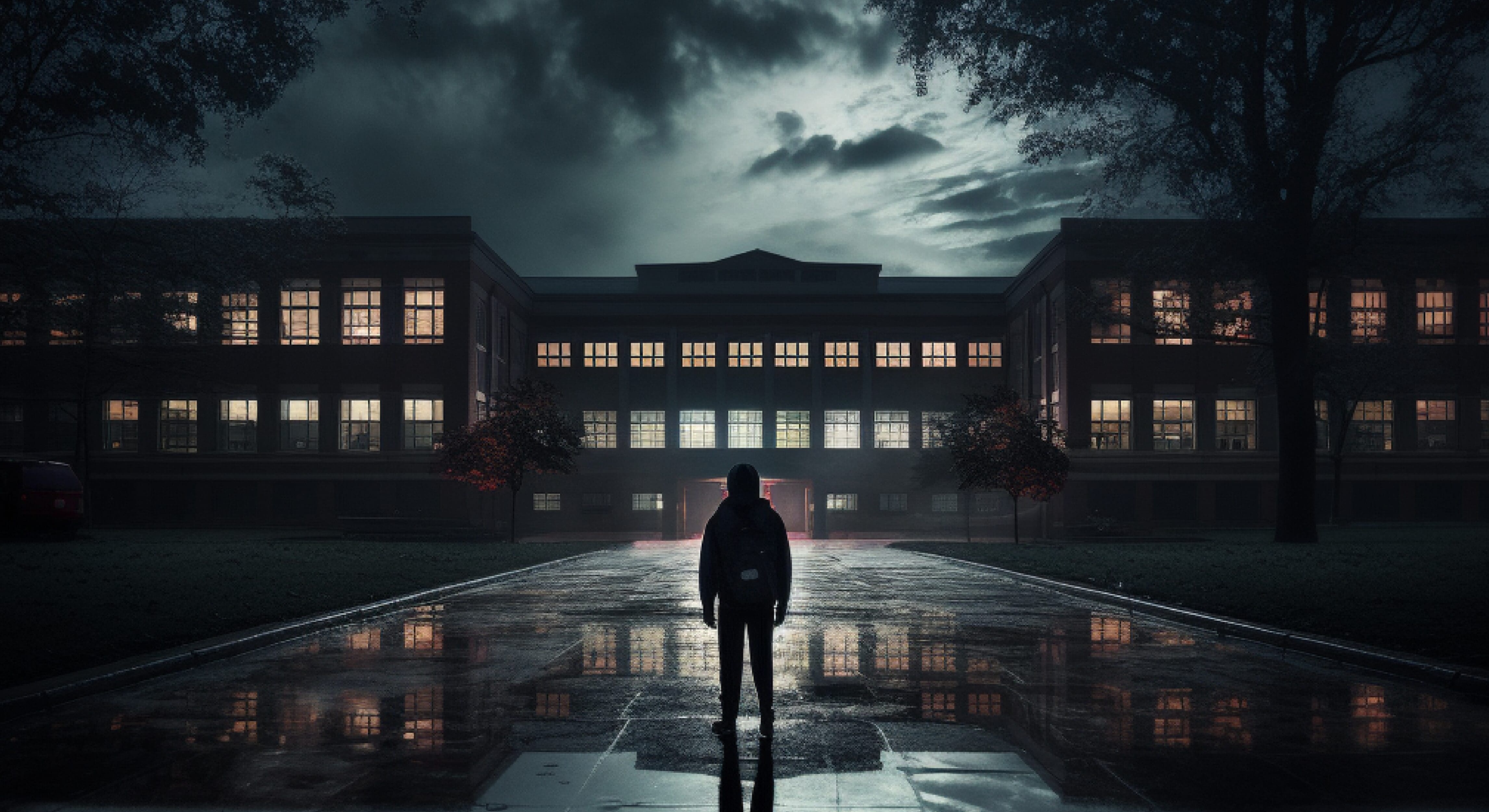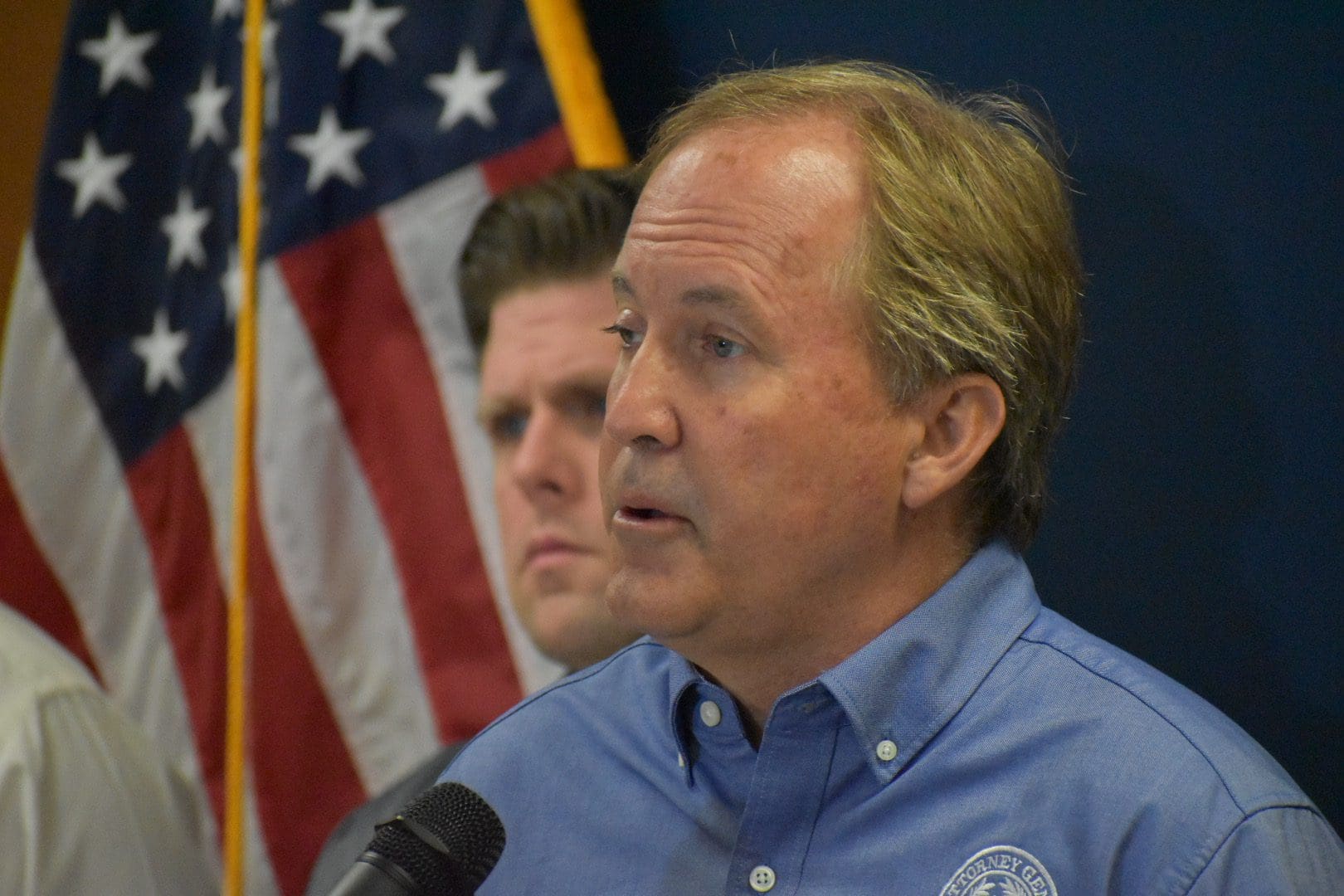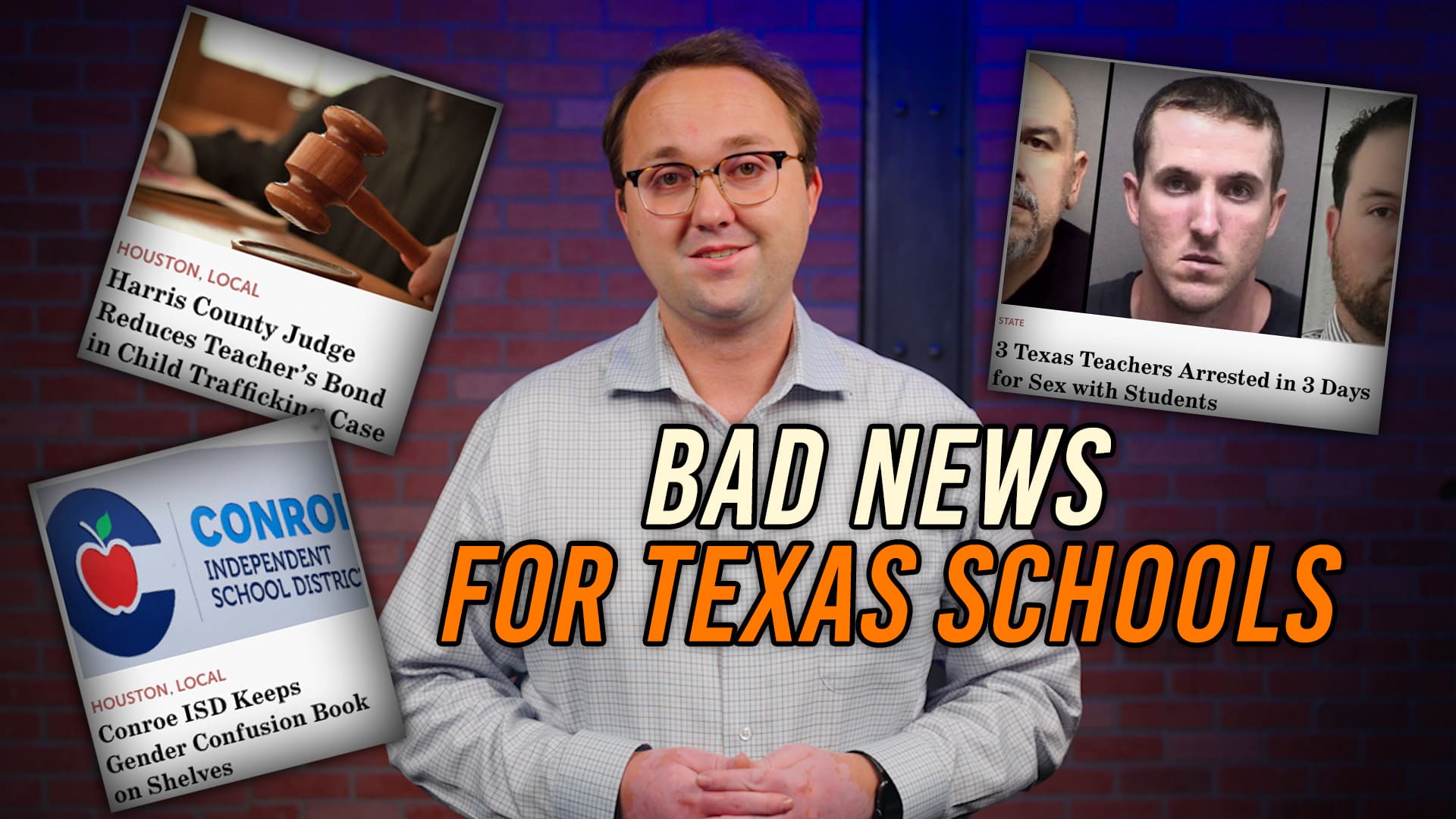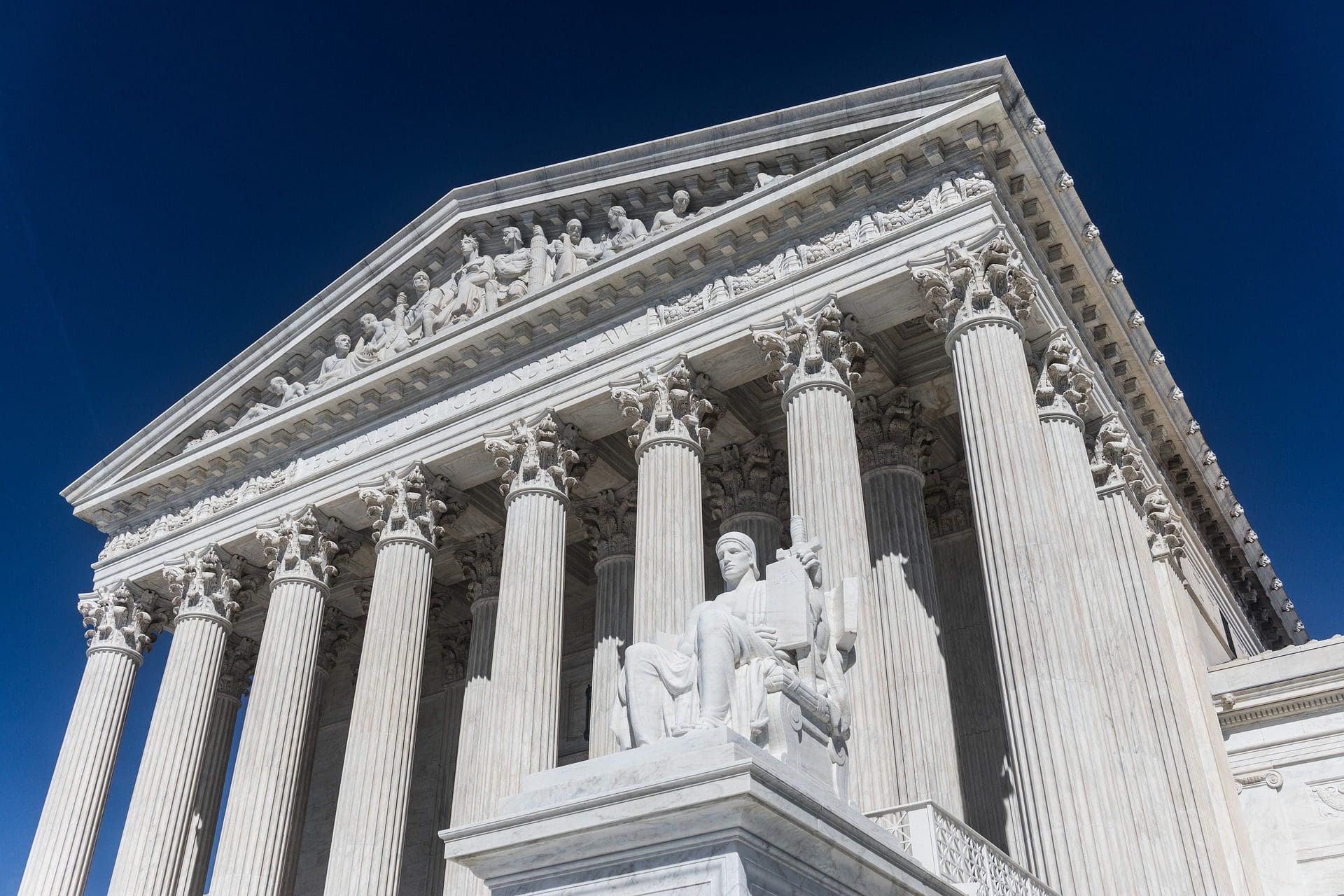Multiple alarms about sexual abuse in Texas government schools have gone unheeded.
This problem has been with us for years. The long list of victims continues to grow. Texas’ government schools have become a hostile learning environment.
One specialist said the problem in schools is a toxic culture, one that makes it easy for employees to give in to temptation.
Backstory
In part one of this series, Texas Scorecard reviewed multiple cases across the state of alleged Educator Sexual Misconduct. Each spanned different time periods but shared common factors of school employees either ignoring red flags or attempting to cover up predatory behavior.
In this article, Texas Scorecard will review more documentation confirming that Educator Sexual Misconduct in schools has been steadily increasing for years. These records indicate that the multiple cases and reports Texas Scorecard covered in part one are not aberrations. They are a snapshot of a pattern.
National Problem
In 2001, President George W. Bush (R) signed into law the much-maligned “No Child Left Behind Act.” An aspect of that law deserving more discussion was a requirement for “a national study of sexual abuse in schools.”
In 2004, the U.S. Dept. of Education (DOE) published a white paper tracking the issue: “Educator Sexual Misconduct: A Synthesis of Existing Literature” by Dr. Charol Shakeshaft. This paper pulled together multiple different sources of research available at the time.
Today, Shakeshaft is a professor at Virginia Commonwealth University where she teaches in a department that prepares people to be school administrators. She has studied the sexual abuse of students in schools by both adults and other students for many years. She is currently completing a book on the sexual abuse of students by school employees for Harvard Education Press. She agreed to an interview with Texas Scorecard to discuss Educator Sexual Misconduct (ESM).

Dr. Charol Shakeshaft
She doesn’t believe schools themselves are inherently a “magnet” for predators. Rather, if people are predatory towards children, they will go where children are present. Schools are one place where large numbers of children congregate, so predators may seek employment or access to schools in order to be around potential victims. However, Shakeshaft also notes that most cases of ESM do not involve outright predators—they more often involve people who lack good judgment or boundaries and gradually cross lines that are not stopped. The current culture in schools foster, rather than check, temptations.
Before publishing her 2004 paper, Shakeshaft said she had done some previous research, and published work on school employee sexual misconduct. Later, after Congress had passed a law asking for a study on the sexual abuse of students, the U.S. Department of Education and Department of Justice had asked her if she would do the work. That resulted in her 2004 study that looked at both government and private schools nationwide. When asked about the scope of her study, she said it was “a review of pretty much everything that had been published that we can find from the 1970s onward. Plus, I used a number of data sets that were in the public domain, and or government data sets to try to get further information.”
What she found was shocking.
Her paper noted that while there was no national study of ESM as the main point at the time, there were seven studies that looked at ESM from a regional perspective. According to her research, 9.6 percent of more than 2,000 8th-11th graders experienced unwanted sexual contact or noncontact. Of students who experienced any kind of sexual misconduct, 21 percent were targets of educators, and 79 percent were targeted by other students.
Shakeshaft’s paper cited a 2000 study that found teachers made up 90 percent of “school institutional sexual abuse cases” in its analysis. Another study she cited stated that teachers were reported most often for ESM, followed by coaches. “Teachers whose job description includes time with individual students, such as music teachers or coaches, are more likely to sexually abuse than other teachers,” Shakeshaft wrote.
Getting Worse
As time has passed, more data has been collected and indicates the problem is growing.
In 2015, the Children’s Treatment Center for Psychiatry, Psychology & Related Services published an article titled “Sexual Abuse by Teachers is on the Rise,” by Dr. Andrew Rosen. In it, Rosen points to data compiled by Stop Educator Sexual Abuse Misconduct & Exploitation (SESAME). According to this piece, just under 500 teachers had been arrested on charges relating to sexual abuse of students, while a reported 3.5 million students reported some form of sexual contact with educators. This goes up to 4.5 million “when it takes other types of sexual misconduct into consideration, such as being shown pornography or being subjected to sexually explicit language or exhibitionism.”
Like Dr. Shakeshaft did in 2004, Dr. Rosen wrote SESAME found other teachers ignored red flags. “Very often, other teachers ‘thought there might be something going on’,[sic] but were afraid to report a fellow educator if they were wrong,” he wrote. “They didn’t want to be responsible for ‘ruining a person’s life,’ although that is exactly what they are doing to the child if they don’t speak up, thus allowing the abuse to continue.”
Dr. Rosen argues that the rise in sexual abuse cases is “more than likely” because of technology that gives teachers easier private access to students.
Another source agreed the problem of predators in schools keeps growing.
Amy Riggs’ 2022 Doctoral Paper synthesized research from multiple sources. Riggs focused on ESM and “Passing the Trash” in Connecticut, Pennsylvania, Oregon, and Texas. It cited a 2018 study that found that 1 in 3 teachers found guilty of ESM had more than one victim and 20 percent had more than five. 1 in 3 teachers were new to the profession or to the school district when the first offense occurred. There were 498 known cases of ESM in 2015, but it is believed that that number only represents 5 percent of the actual number. Between 2001 and 2005, more than 2500 teachers had their certificates revoked for ESM but merely 1,285 were reported to law enforcement.
Riggs pointed out the need for this problem to be more closely examined. “Educator sexual misconduct (ESM) is prominent in public schools throughout the United States, but scholarly inquiry into this phenomenon is limited and dated.”
But what of false accusations? Shakeshaft addressed this in her 2004 paper. False accusations do happen but are not as widespread as believed. Many people are unresponsive to student accusations because they believe that they are false. There is still much difficulty in proving an allegation false or true because often the behavior is hard to prove without hard evidence like messages or witnesses.
Texas came up in her work. She mentioned a 2003 Dallas Morning News report of “606 cases of educator sexual misconduct from Texas State Board of Educator Certification records.”
While we do not know the full extent of educator sexual misconduct today in Texas government schools, national data may indicate the problem has gotten worse since Shakeshaft’s 2004 paper. She said that studies show the number of students reporting having been the target of an adult’s sexual misconduct in schools has increased. However, she notes this could be partially due to students being better able to name and identify inappropriate behaviors today compared to the past. Overall, she said even if that’s a factor, “we are seeing an increase in the numbers” of reported cases of educator sexual misconduct based on current studies compared to when she began her research.
Victims
Part one of this series discussed how often victims don’t self report. “Several studies estimate that only about 6 percent of all children report sexual abuse by an adult to someone who can do something about it. The other 94 percent do not tell anyone or talk only to a friend. (And they swear their friend to secrecy),” Shakeshaft wrote in her 2004 paper. She cited data from 1988 and 1994.
However, that doesn’t mean they tell no one. After reanalyzing data from the American Association of University Women (AAUW), in her 2004 paper Shakeshaft wrote that more than 71 percent of students who had been targeted by peer and/or educator sexual misconduct told someone, with more than 56 percent telling more than one person. The number one category they told was a friend (69.7 percent), second was someone else (44.9 percent), third was a parent (31.8 percent), fourth was a teacher (14.6 percent), and last was another school employee (14.1 percent).
Further reading into Shakshaft’s paper suggests a change in mindset occurs when a student becomes the victim of a sexual predator. “When asked if they would complain to a school employee if sexually harassed by a teacher or other school employee, 71 percent responded affirmatively. However, among the students who were harassed by a school employee, only 11.6 percent actually told a teacher while 10.6 percent reported to another employee.”
More data tends to support this.
Alvi Ali’s 2022 Masters Thesis Proposal, “Educator Sexual Misconduct: An Examination of Sanction Disparities Among Texas Female and Male Educators,” cited a 2020 study of 1,203 high school students. It found two percent admitted to being in a relationship with an educator. These numbers are based on self-reporting, so it is likely the figure is higher. However, that number is consistent with what anti-sex slavery advocate Jaco Booyens told Texas Scorecard in our investigative series on sex slavery in Texas (Parts 1, 2, 3, 4). He said most victims of sex slavery do not self-report, so the complete size and scope of the sex slave trade in Texas remains unknown.
Ali wrote that grooming is a reason why ESM is underreported. If the student feels they “owe” the teacher, they will not report it.

What’s more, there appears to be a perception of a tacit agreement in place. Ali’s paper states there seems to be a “code of silence” around ESM. Of 148 students, 60 percent believed there was a collaboration of silence between administrators, teachers, and students about it.
Even though victims may not self-report, that does not mean there are no red flags warning of abuse. In her September 2023 interview, Shakeshaft told Texas Scorecard she believes silence is a major contributing factor that allows the sexual abuse of students to continue. She states that in almost every case she has studied, other adults and students saw concerning behaviors but did not speak up. The reason abuse is “allowed” to happen is because “people don’t say anything.” But if more people spoke up when they saw red flags or concerning interactions, there would be “a lot less sexual abuse” of students.
But what about when victims do self-report?
“Abuse is allowed to continue because even when children report abuse, they are not believed,” Shakeshaft wrote in her 2004 paper. “Because of the power differential, the reputation difference between the educator and the child, or the mindset that children are untruthful, many reports by children are ignored or given minimal attention.” She mentioned a study that documents the case of teacher Kenneth DeLuca. He was convicted of sexually abusing 13 students, aged 10 to 18, over the course of 21 years. “Nearly all of the students reported this abuse at the time. However, school officials did not take these accusations seriously.”
Damaged Children
Sexual predators in schools inflict damage upon their victims. Sexually transmitted diseases can be one kind of damage, as covered in part one of this series, but there are other kinds.
Shakeshaft again referenced data from the American Association of University Women. “Reanalysis of the AAUW data indicates that targets of educator sexual misconduct report that they suffer emotional, educational, and developmental or health effects.” According to the data, 36 percent of the students studied “felt afraid or scared,” 29 percent “felt confused about [their] identity,” and 29 percent “doubted whether [they] could ever have a happy romantic relationship.” 28 percent reported health effects like sleep disorder and appetite loss. “A substantial number of students report negative feelings of self worth because of the abuse.”
This abuse can affect academic life as well. The AAUW data found that about a quarter of students who were targets of ESM report academic or discipline repercussions that they attribute to the incident. 25 percent reported having “received a lower grade on a test or assignment, while 25 percent reported they got a lower grade in class, and 25 percent reported that they “got into trouble with school authorities.”
Of the reported abuse, it is almost always some form of physical sexual abuse. Verbal or visual abuse is almost never reported. The most common reason that students don’t report ESM is fear that they won’t be believed.
Predatory Behavior
The patterns of predatory behaviors differ depending on school environment and the targets.
In her 2004 paper, Shakeshaft wrote that teachers who abuse students younger than 7th grade follow a different pattern than those who prey on older students. Elementary school teachers are often accomplished and well-known to parents and students. In many cases, this leads to allegations being ignored on the belief that such “outstanding teachers” can not be abusers.
Predators are too sly to just start abusing a child immediately. First, they test the waters and try to guide malleable minors right into their trap. Shakeshaft referenced a 2000 study on this:
“The purpose of grooming is to test the child’s ability to maintain secrecy, to desensitize the child through progressive sexual behaviors, to provide the child with experiences that are valuable and that the child won’t want to lose, to learn information that will discredit the child, and to gain approval from parents.”
In 2004, predators in schools were identified as a national problem. Even then Texas caught the eye of Shakeshaft. She referenced a study that “found that 25 percent of the educators in Texas who were disciplined for sexual infractions involving students between 1995 and 2003 were coaches or music teachers.”
Predators in Texas Government Schools
Catherine Robert and David Thompson wrote in their May 2018 white paper that the Texas Education Agency (TEA) reported an 80 percent increase in Educator Sexual Misconduct (ESM) from 2008 to 2016. This included a 145 percent increase in the past 9 years, ending in the 2016-2017 year. Teachers make up 82 percent of the cases, with 12 percent being auxiliary or paraprofessional staff. Five percent were administrators.
Robert and Thompson’s research indicates a lack of competent hiring, screening, and training processes in government schools. 11 percent of “ESM sanctioned teachers” were new to teaching and 36 percent were within their first year at the district.

Consistent with other papers reviewed in this article, both researchers admit that the data they collected is merely a snapshot of the problem. It doesn’t show the complete picture. For this particular case, they pointed the finger at state public servants. “We determined that the state’s recording methods of ESM cases to date has not met the best interests of Texas students,” Robert and Thompson wrote. At the time, they found both the Texas Education Agency’s record of offenses and other documents were missing cases, resulting in an incomplete record of ESM in Texas.
In 2020, the Texas Education Agency set up their Misconduct Reporting Portal as one means of reporting misconduct allegations. A grassroots investigation has raised questions if school administrators are abiding by state law mandating reports of misconduct. TEA has said their portal is only one way misconduct can be reported, and that the agency itself is following the law.
Vulnerable Kids in Corrupt System
Shakeshaft’s paper indicates that school officials often have enough information to take action of some sort. “While formal reports might not be made in school, informal information is passed on through rumor, innuendo, and jokes. Often it is a friend of the target or a parent of a friend who brings the issue to school authorities,” she wrote. Citing a 2004 study, she adds that “notice of educator sexual misconduct comes to the attention of school officials in five ways: formal complaints, informal complaints, observed abuse, observed suspicious behaviors, or rumors and/or anonymous reports. Formal and informal complaints are most likely to originate from targets or parents of targets, although parents of a target’s friend sometime report the abuse. Seldom is the abuse reported by a teacher, even if the child has told the teacher.”
“Of the cases that come to a superintendent’s attention, nearly 90 percent are contact sexual misconduct (Shakeshaft and Cohan, 1994). When alleged misconduct is reported, the majority of complaints are ignored or disbelieved (Shakeshaft and Cohan, 1994). Other students note this lack of response and conclude that teachers (or coaches or administrators) cannot be stopped (Shakeshaft, 2003). If the school will not act, what can a mere student do?”
Since 2004, multiple studies have raised alarms about the ever-increasing problem of predators in government schools. They also showed Texas is not immune to this problem. Starting in 2022, there’s been an explosion of news reports in Texas proving that these warnings had merit.
General news reporting, and the 2018 paper from Robert and Thompson, indicate that Educator Sexual Misconduct in Texas is becoming more of a problem. Nationally, Shakeshaft told Texas Scorecard the numbers of reported ESM incidents have gone up.
Unless the disease is correctly diagnosed, citizens and public servants may waste energy treating symptoms. Shakeshaft said there’s a “cultural problem” in schools regarding ESM. Their current culture does not encouragee “vigilance, and immediate action when it appears there’s a red flag.” They do not sufficiently promote speaking up, thoroughly investigating concerns, and holding people accountable when boundaries are crossed or misconduct is suspected. This allows the abuse to continue. It also creates an environment where school employees are more susceptible to temptation.
Shakeshaft’s 2004 study covered both government and private schools. Customers of private schools have levers to hold those accountable, but what of government schools? Aileen Blachowski of grassroots organization Texas Education 911 told Texas Scorecard that citizens have the right to hold those accountable because they are funded by taxpayer dollars. It’s important to do so to ensure the safety of students. Students deserve to learn in an environment free from danger, and parents must be able to trust that their children are safe at school. Accountability helps build that trust and protects student welfare.
But when these abuses happen, by what mechanism can parents hold their government schools accountable for allowing their children to be preyed upon and violated? How can citizens change the culture in their government schools?
Source Documents
For this article, Texas Scorecard reviewed multiple documents.
We reviewed:
- Educator Sexual Misconduct: A Synthesis of Existing Literature, by Dr. Charol Shakeshaft (2004).
- Educator Sexual Misconduct and Texas Educator Discipline Database Construction by Catherine Robert and David Thompson (May 2018).
- The Impact of Federal Policy Requirements On Educator Sexual Misconduct And Passing The Trash In Four States by Amy Reynolds Riggs (An Applied Doctoral Project, July 2022).
- Educator Sexual Misconduct: An Examination of Sanction Disparities Among Texas Female and Male Educators by Alvi Ali (Texas State University Masters Thesis Proposal, August 2022).
This article contains highlights from these documents. Citizens wishing to conduct a deep dive should click the links above.
In Part 3, Texas Scorecard will examine how the government school system is designed to shield itself from accountability for being a hostile learning environment.






